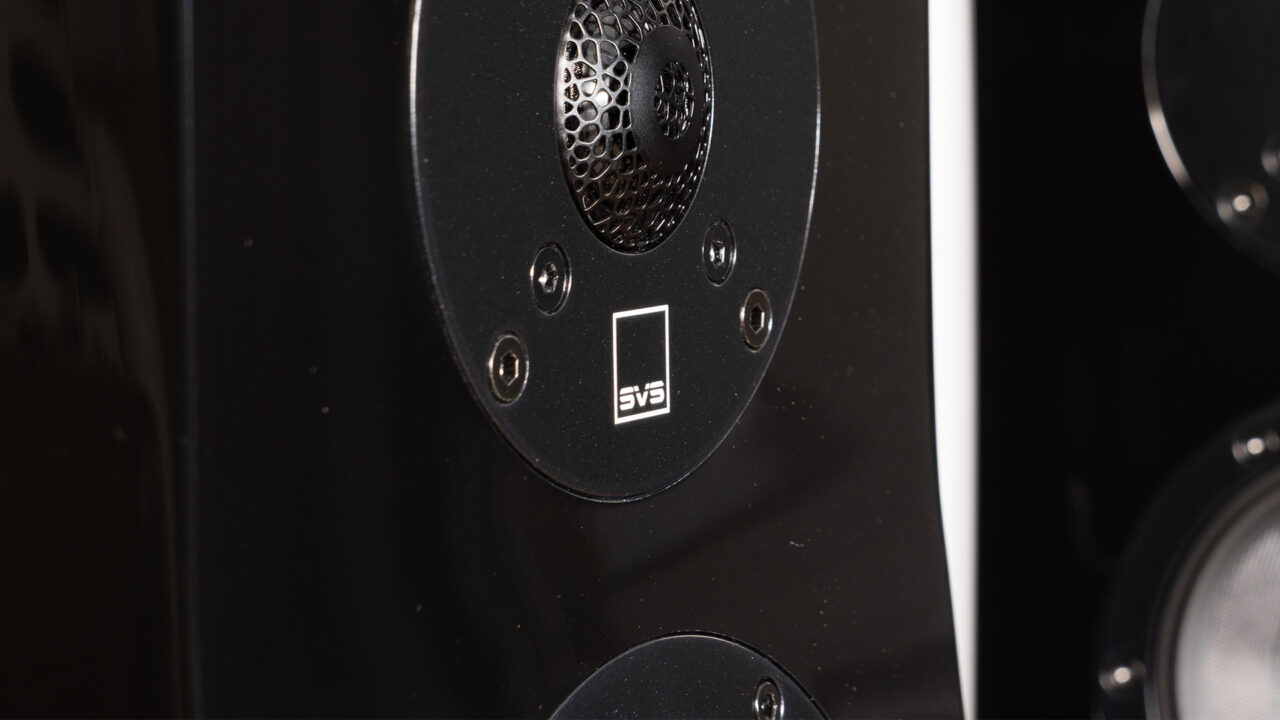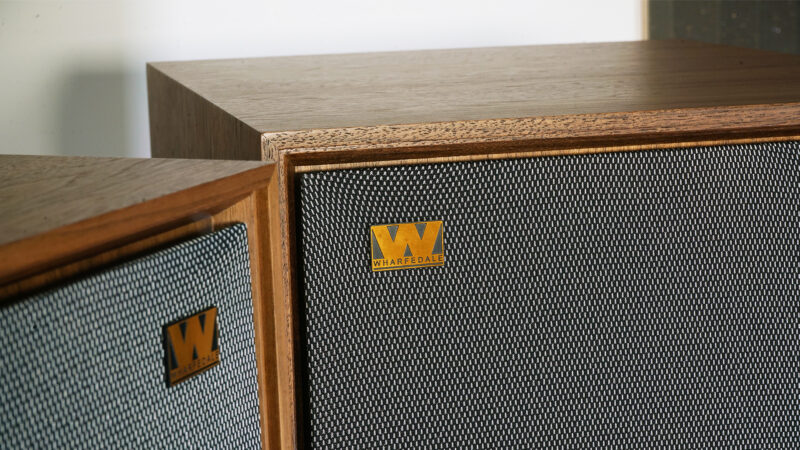Us hifi fans can be a fickle bunch with a tendency to stick to what we know, so when a brand like SVS, that’s more associated with making dedicated subs, starts offering fully fledged loudspeaker ranges, it needs to work that bit harder to get our attention.
And that’s exactly what it’s doing with its recently announced seven-strong Ultra Evolution range. Because in place of the more standard flat fronted rear ported only designs (like its cheaper Prime models), we get angled cabinets and multi-directional drivers to make these uprated versions really stand out.
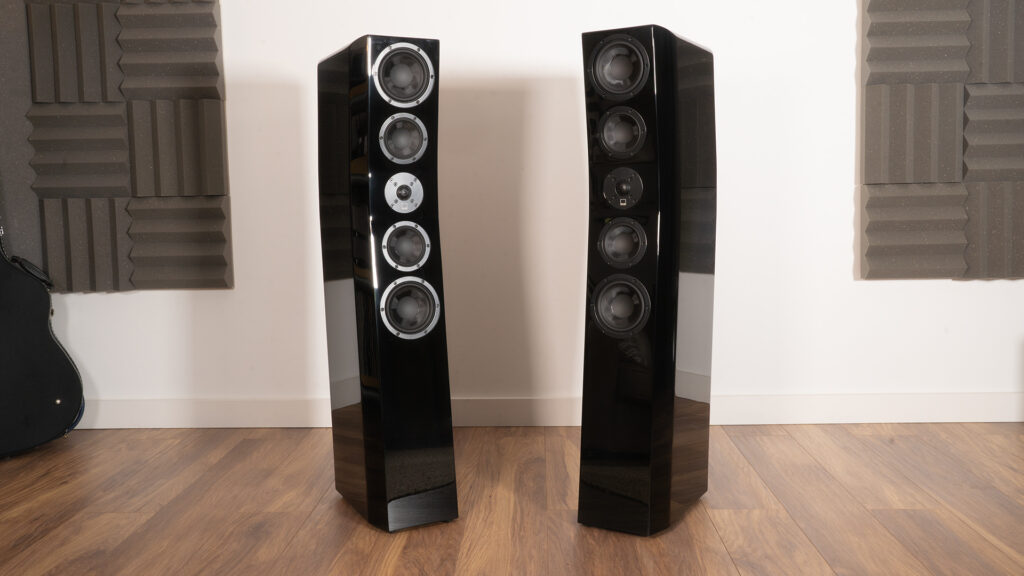
Available in piano gloss black (above), piano gloss white or black ash finishes, the Tower model is SVS’s smallest Ultra Evolution floorstander, measuring 1130 x 218 x 424mm (HWD)
The line-up starts with the Ultra Evolution two-way Nano at £1,100 a pair, all the way up to the flagship Pinnacle floorstander at £6,000.
The Tower model on test here is the smallest of three floorstanders within the range, priced at £3,599. It sits below the Titan at £4,999 with the lower cost accounted for by smaller bass drivers and cabinets, while the amount of drive units on offer across all three remains the same at no less than seven in total. Yes you read that right, a full seven.
On their font baffles you get twin bass and midrange drivers flanking a centrally positioned tweeter in a D’Appolito array, but this only tells half the story, because on the speaker’s rear resides two more bass drivers for added oomph.

The Tower’s front and tush, revealing its seven strong driver line up, made up of quad 5.25″ bass drivers, twin 4.5″ mids and a 1″ tweeter
Magnificent seven
But these aren’t just there for bragging rights over SVS’s rivals, as let’s not forget this company is a subwoofer specialist, and the way these drivers have been applied is all about integrating that subwoofer knowhow into a full range loudspeaker.
What this means is two pairs of 133mm (5.25″) glass fibre cones with inverted dustcaps, opposing each other at the cabinet’s top and bottom in what SVS calls a ‘Force Balanced Array’, that’s borrowed from the brand’s 3000 Micro Subwoofer. The intended effect being healthy levels of genuine low frequency response (down to 30Hz at +/-3 dB) while helping to counteract unwanted room nodes and cabinet colouration, because each front-firing woofer is equaled inside the cabinet by the rear-firing woofer, to significantly reduce vibration.
Their bass-drivers’ subwoofer-like long stroke motors and suspension are further aided by precision-cast aluminium baskets and vented aluminium voice coils.

Composite glass fibre cones are the order of the day for bass and midrange drivers, chosen for their stiffness to mass ratio, meaning high sensitivity and optimum pistonic behaviour
Say it with diamonds
On midrange duties are twin 115mm (4.5″) woofers made from the same material as the bass drivers, with lightweight vented Kapton voice coil formers.
The tweeter is where things get even more special thanks to a 25mm (1″) diamond coated aluminium dome, that’s the same as the one fitted to the more costly models in the range. And this isn’t just hifi marketing jargon, as producing these is both specialised and expensive, requiring a vapour disposition process whereby a layer of diamond carbon is ‘grown’ on the dome’s surface for greater rigidity.

25mm diamond coated tweeter resides behind a protective FEA-optimised ‘Organic Cell Lattice Diffuser’ mesh
To have a tweeter of this quality included within the price of the Pinnacle model at £6k is perhaps to be expected, but that SVS fitted them across the range, including to the Tower model at under £4k, makes for an enviable spec sheet.
Equally eye-catching is the Tower’s cabinet shape with concaved front baffle to intentionally recesses the tweeter, with the midrange and bass drivers being further forward and angled towards an intended listening position, which SVS catchily refers to as its ‘Acoustically Centred Time Alignment Cabinet Architecture’.

The Towers’ side profile highlighting their angled baffles to time align high and low frequencies
Note I’m avoiding saying ‘curved’ in describing their form as the Tower’s 25mm thick front baffle (18mm for the rest of the cabinet walls) is actually made up of three flat planes fixed at differing angles. These are then further enhanced thanks to chamfered edges that also make the front baffle appear narrower than it actually is, to reduce unwanted reflections.
While spikes are included in the box, adjustable rubber domed feet are pre-fitted which are a much better match for my hardwood floor, although unlike many speakers of this size, the Towers don’t employ external outriggers, making them a little more susceptible to accidentally being knocked over, but in use they’re plenty stable.
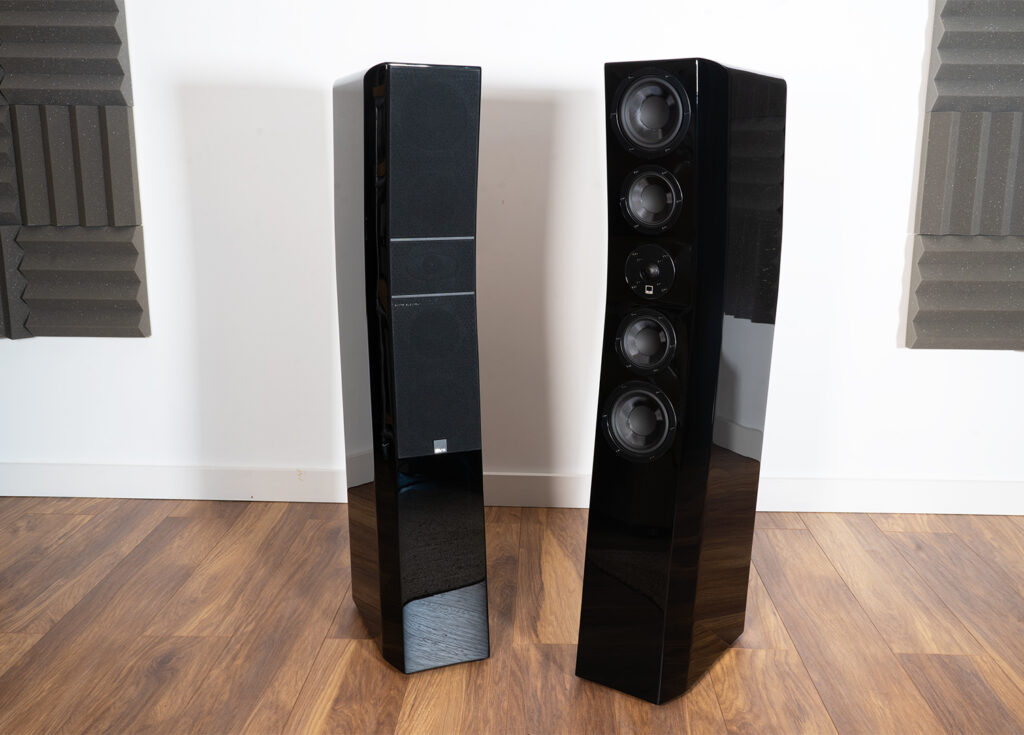
Supplied magnetically attached grilles are included to protect the all important music making hardware
Performance
As a hifi reviewer I try to remain as neutral as possible but inevitably preconceived bias can sometimes creep in, and with a metal tweeter married to all those bass drivers, I was perhaps expecting a hot sounding speaker with oodles of low end wallop more suited to home cinema setups than two channel hifi. And how wrong I was. Because the SVS Tower is neither of these things, making it a very enjoyable loudspeaker for longterm two channel listening.
Partnering gear for reviewing purposes is a Rotel Michi X5 amp, fed by a Primare digital duo of NP5 Prisma Mk2 streamer and NP30 DAC. For vinyl duties, an SME 20/2 turntable with AVID Nexus tonearm and MoFi MasterTracker moving-magnet pick-up through a Primare R35 phono stage are called into action.
Starting with the Tower’s high frequency response, there’s a smoothness here that will put many a soft dome tweeter to shame, with good levels of clarity to boot. Listening to Beth Gibbons’ latest Lives Outgrown album (Qobuz 24-bit/96kHz) underlines this point well, as laying forth all the detail and delicacy she effortlessly musters without adding in too much sibilance is a challenge for any speaker, and the Towers are more than up to it. Her pronunciation and whispered delivery is nicely rendered with good levels of air and space, without sounding overly forward or forced as they do on speakers favouring a brighter presentation.
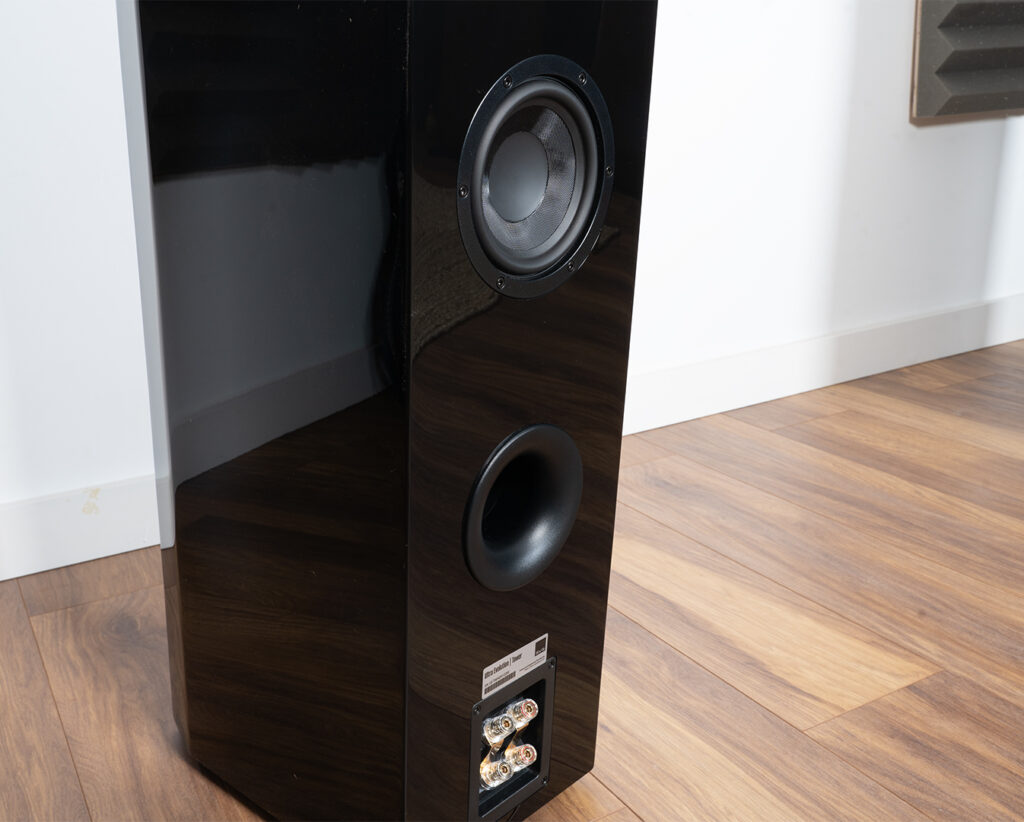
Multiway speaker terminals are fairly standard fare, although two sets means bi-wiring/amping is made possible
While at the other end of proceedings the bass quality the Towers muster is exceptional for a speaker at this price. My benchmark at this level is Dynaudio’s Evoke 50 which are able to fill my large (30sqm) listening room with generous amounts of low frequencies that few rivals can match, and hearing the Tower’s in comparison is a closely run race.
Whereas both seem to reach as low as they claim (Dynaudio at 35Hz and SVS at 30Hz) the SVS has that bit more control for a punchier delivery.
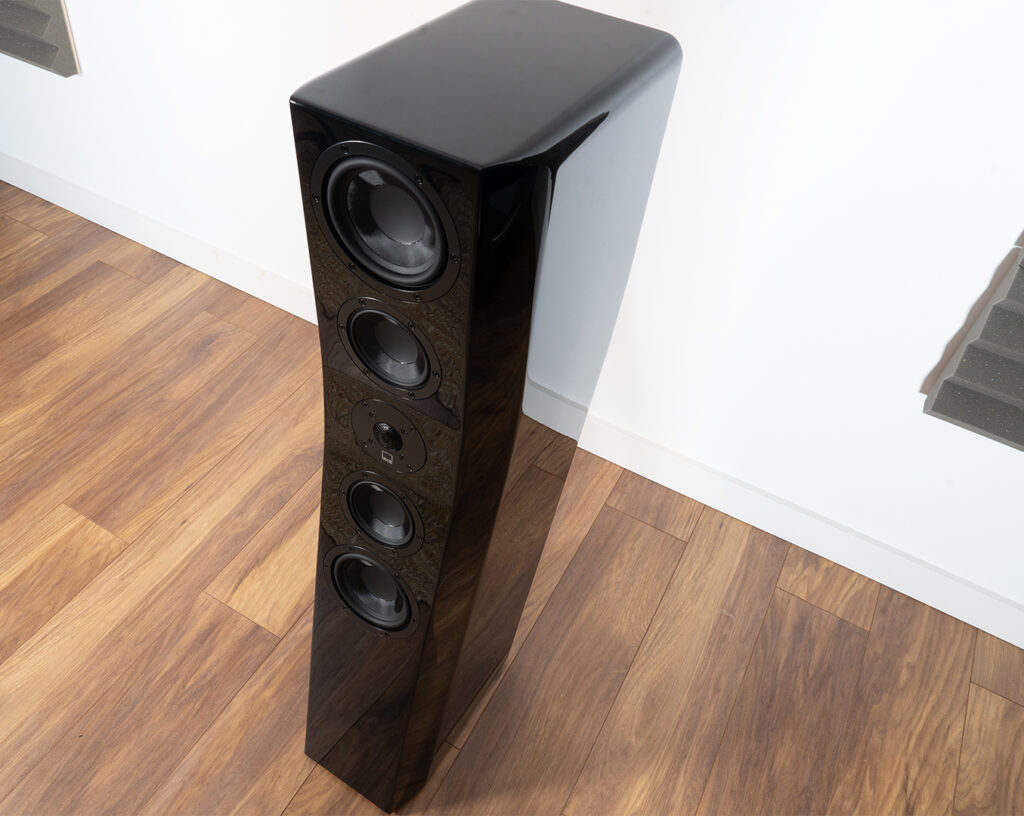
Eye catching from every angle, SVS’s Ultra Evolution range bucks the standard box speaker trend
Jennifer Warnes’s The Hunter (Qobuz 24-bit/48kHz) is an excellent album to work a woofer out, and on tracks like Way Down Deep the Towers are in their element showing what they’re really capable of, which equates to plenty of texture, weight and genuine force that’s subwoofer performance inducing, but crucially without excessive bloom or overhang.
That said, with so many drivers at work (including rear firing ones), experimenting with positioning is key to getting the best from these speakers as they need a decent amount of rear breathing space to avoid the low end becoming a little too overwhelming, but that’s perhaps to be expected. While attention grabbing for its sheer bass volume, Massive Attack’s Protection (16-bit/44kHz FLAC) for example sounds a little too closed in with the speakers less than 200mm from a rear wall, but pull them forward and the soundstage really opens up, so it’s worth demoing a pair in your own environment if you can if these are on your shortlist.

View from above reveals how the Tower’s cabinet narrows to the front baffle
Focussing on one or two elements of what this speaker does well though is missing the bigger point, as where their real strength lies is in their overall seamless presentation. D’Appolito aligned speakers is an approach that goes back decades and for good reason, as when done well there’s a sense of integration especially in vertical soundstaging that just sounds right and SVS has really nailed this with the Tower model for a fully encompassing sound with vocals nicely placed right at the centre of the mix.
Hearing Jordan Rakei’s The Loop LP that’s packed full of arrangements, vocal harmonies and tempo changes really allows the Towers to shine in this respect, presented with levels of scale and depth that I’d usually associate with much larger speakers. And this is because of how well its drivers all pull together – there’s no sense they’re competing with each other for space in the mix and therefore what you hear is more than the sum of the speaker’s parts.
In summary
As the ‘baby’ floorstander in the SVS’s Ultra Evolution range, this is lot of loudspeaker for the money with a smooth and rich musical delivery. And while they welcome plenty of power with an 87dB/6 ohms spec sheet, for a speaker of this size they can fill medium to large rooms with impressive scale and weight. Their looks may not be for everyone, but sonically? They’re great value and come highly recommended.


